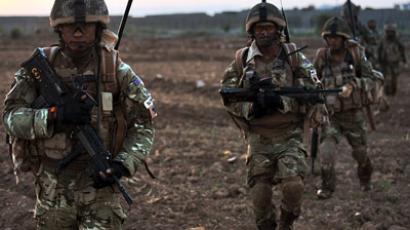UN report exposes torture of Afghan detainees

A new UN report has exposed cases of vicious torture of Afghan detainees, including beatings, hanging by the wrists and electric shocks. Many were handed over to authorities by foreign troops, despite numerous concerns about their previous treatment.
A United Nations Assistance Mission in Afghanistan (UNAMA) report released on Sunday underlined the abuse of ‘conflict-related detainees’ across 89 detention facilities in 30 provinces from October 2011 to October 2012, many of whom have been relocated to multiple Afghan detention camps by foreign governments.
Extensive interviews revealed that 326 – more than half – of the 635 detainees consulted had experienced ‘ill-treatment and torture’. The interviews also revealed that torture was still a systemic problem in the prisons, and that incidents of torture in Afghan National Police facilities have actually increased over the past year.
Those who suffered at the hands of authorities revealed their shocking firsthand experiences to interviewers, with 105 of the cases involving those classified as children under international law.
One detainee from Farah, western Afghanistan, reported to the UN that he was laid on the ground, as two individuals sat on his feet and head. The third took a pipe, and started beating him with it, saying “you are with Taliban and this is what you deserve.”
A 16-year-old boy gave a harrowing account to UNAMA, saying that “if I did not confess that I am a Taliban member, then the last resort would be pulling down my trousers and pushing a bottle into my anus… He asked the other interrogator to bring the bottle and then pull my trousers down…I realized that I could not do anything else except to accept what the interrogators wanted me to admit.”
Another spoke to interviewers of how he was handcuffed behind his back: “…fabric was very tightly around and under my arms and [they] suspended me from a mulberry tree. They did this for long periods of time until I would lose consciousness. This happened every night for six days or so… Around three times a foreign delegation, composed of American military, I think, came to check the Hawza, but each time they came I was hidden.”There were further accounts of detainees being hung from the ceiling by their wrists, beaten with objects such as wooden sticks, cables and rifle butts, being shocked with electricity until they passed out, their genitals being twisted and beaten, and death threats.
Many of the accused detainees who end up in Afghan custody are captured by US and allied troops. Overall, 79 out of the 635 captives surveyed had been captured initially by international military forces or foreign government intelligence agencies, occasionally working alongside the Afghan forces. Of these, 25 had been subjected to torture.
In October 2011, NATO temporarily halted the transfer of prisoners to the facilities amid reports that detainees had been beaten with rubber hoses and hung from hooks. However, this was a temporary measure, and NATO transfers resumed in February 2012 to 12 of the 16 detention centers at which routine abuse was reported.
UNAMA Director of Human Rights Georgette Gagnon criticized the lack of investigation into the matter, saying that there were “no prosecutions for those responsible.”
Of the 635 prisoners interviewed, 552 had been convicted of offenses related to the Afghan war; 19 of those convicted had no knowledge of the specific crime for which they had been detained.
The treatment of prisoners in Afghanistan has been an ongoing source of concern. In 2002, intense controversy erupted over abuse at the US-run Parwan Detention Facility (DFIP) following the deaths of two prisoners at the hands of American soldiers. However, a footnote in the report stated that UNAMA did not visit the DFIP or the Afghan National Detention Facility at Parwan, so these facilities were not included in UNAMA’s sample and detention observations. The reasoning behind this exclusion was not given.
UN investigators were also informed of the alleged existence of numerous unofficial detention sites, hidden facilities which were not accounted for by international observers. Although these allegations were denied by Afghanistan’s intelligence agency, the UNAMA report described the accounts as “credible.” Additionally, the UNAMA received credible reports of the suspected disappearance of 81 individuals taken into Afghan National Police custody from September 2011 to October 2012.
The Afghan government’s internal monitoring committee called the allegations of torture “untrue and thus disproved.” The UNAMA conceded that some interviewees may have falsified accounts, and said it exercised discretion in its report.














